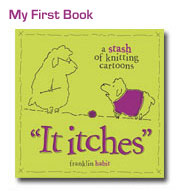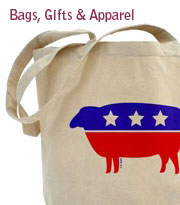One of the gay stereotypes that absolutely refuses to die is that we all like to wear women's clothes, or that we all have a sexual attraction to men who wear women's clothes. Going about thus attired is commonly known as "doing drag." Those who cross-dress are known as "drag queens."

While it is true that drag is an old and established part of the gay scene, wearing dresses is no more a universal practice among gay men than the taking of Roman Catholic Holy Communion is a universal practice among Christians.
And oddly enough, all of the men I've known who expressed a sexual fascination with cross-dressing were heterosexual. You think I'm kidding? Think again.
Mind you, I'm sure there are gay men who find a guy in a Jean Harlow wig a turn-on. I just haven't met any in the past 36 years.
My first encounters with drag queens took place when I was a mere stripling of 15, lying about my age to get into bars. (Sorry, Ma. They didn't have high school groups in those days. Unless you count Drama Club.) The very first was either Jerry or Charisse, depending upon the day. Jerry was an amiable fellow who wore bow ties. Charisse was a spangly, red-hot mama with an Anita Baker fixation who scared the living daylights out of me.
I've often wondered why. She never did or said anything threatening. In fact, she never spoke to me beyond a casual greeting. I think the fear must have arisen from my lack of experience with those who defy category. At that age, I needed other people to fit neatly into the little boxes stacked in my head. It was difficult enough not knowing what my place in the world was supposed to be.
These days I've relaxed sufficiently to appreciate people who wander hither and thither, obliterating the boundaries that separate male and female, gay and straight. If that sounds anarchistic and objectionable, try to see it from my side. When you're a member of a minority group so controversial that your fellow citizens consider your right to exist open to debate, you welcome almost anything that makes it more difficult to decide what exactly is "normal."
However, even though I've come to appreciate drag, I still don't enjoy it. Not on me, and not on others. I once got suckered into attending a performance at a local club called "Night of a Thousand Drag Queens." I made it to number 26, but my nerves were shot for the rest of the weekend.
And I'm no better about wearing women's clothing.
It has happened twice, both times on stage. First, I played Lady Bracknell in Oscar Wilde's The Importance of Being Earnest - a stunt that got me into hot water at my lousy high school. Our costumer was a stickler for period detail and I wore a corset, a fifty-pound brocade dress with underskirts, and a fifteen-pound hat with an entire stuffed bird on top. By the end of our two performances I had aches in my back and neck that lasted for two solid weeks.
Years later, with a company in Boston, I played a nun in John Guare's The House of Blue Leaves. I had to shave my tough beard every night just before the show in order to avoid five o' clock shadow, and my starched wimple chafed terribly.
Some men are just not strong enough to be women.
Given all that, I have had more than my share of drag names, all bestowed during the operatic phase of my young adulthood:
- Mademoiselle Folie de Grandeur
- Signorina Cavatina Caballetta ("Tina" for short)
- Dee Fledermaus
- Dieta and Tulita Pepsi (a sister act from, I believe, St. Louis)
- Formica Dinette
- Regina Upright
- Frida Lay
Dear God, can't you just imagine the wig that goes with that?
*If you lived on 14th Street, you can substitute your mother's maiden name. If you lived on 14th Street in New York City, it's entirely possible your mother was a drag queen.


